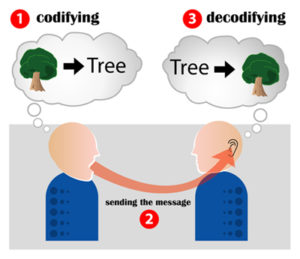As I complete my initial pass through the OTL 101, 201, and 301 courses, I record the following summary observations and plans. These represent only a first pass through the material and closely correspond to specific questions posed at the end of the last course.
most important lessons from the course
The concentration of the curriculum upon design in course delivery demonstrates for me that there is a crucial connection between the design and my role as a course facilitator. Commitments in the course readings toward blended delivery were obvious–and serve as a reminder that continuous-intake delivery of courses is not an optimal learning environment for most subject areas–but the lessons learned have applicability across a wide range of delivery modes.
Another principle learned in the course set is that my role is chiefly to encourage concentration on the work and understanding of the curriculum, but within a context of safe and frequent communication. There is no substitute for the presence of a facilitator when students are working towards completion of their course as individuals. Of course, this principle has been more poignantly demonstrated in its lack herein–OTL 101, 201, and 301 completely lack a facilitator presence at a time when faculty being trained could use it.
Change of thinking from completing the course
In the past, I have had a practice of staying out of students’ way when teaching in a course. Some students seem to resent too much “hovering” on the part of instructors (perhaps in the same way that service personnel can be intrusive when interrupting meals in restaurants to ask if clientele are finding “Everything okay?”).
One thing I will try to make more obvious in future is my own presence in the course, but not in a way that is obtrusive to students who are taking online courses because they are “good independent learners” and who want to demonstrate that they do not need “help to get through the course.” In short, I want to be there for those who need me without being in the way for those who don’t.
In the LMS I am most familiar with, it would be nice if forum discussions could show post authors how many times their posts had been viewed by others. At present, the only way to show authors their post has been read is by replying, but it is sometimes too intrusive for instructors to reply to every post: It would be good for me to be able to see that others have read my messages without necessarily having to have them reply. Visibility of post-views, of tacit response to messages, would be a helpful way to show presence without intruding into (mostly peer) discussions.
platform (WordPress) influence on interaction with the content, other people, and learning
I like the WordPress environment, given its openness and (relative) simplicity. I think it would be a very good option for synchronous course support (and it is not deficient at all for asynchronous support–although tracking when blog posts have been viewed by others would probably be a good enhancement). However, I think it would be very good for WordPress to have some tools for social markup of readings by users such that others could choose to see or ignore such commenting (sort of a mashup of WordPress and Diigo, if that were possible).
However, it would be a mistake to believe that WordPress can deliver personal presence into asynchronous courses where facilitators are absent. The platform is fine for its intended purpose, but it doesn’t provide a sufficient guarantee of success in and of itself.
most effective learning strategies
I think that the most profitable aspect of this course was encouraging me to write (blog) regularly and often. I have long felt as though more writing in university contexts would be better evidence of learning and exploration, but this series of courses has nurtured my own desire to write. Since I teach primarily in humanities, I cannot speak for the benefits of writing in STEM disciplines directly, but I have come to believe quite strongly in the value of writing across the humanities.
This video is the first of a four-part discussion of how writing takes centre-stage in the development of journalism skills that go far beyond writing itself.
two or three ideas to implement
Although I am completing the three courses in this training program as a requisite to continued work with TRU-OL, I believe the value of skills learned will lead to changed practice across all my teaching. Since our default delivery of university education is planned to be remote for the current (fall 2020) semester as a response to the Covid-19 crisis, thinking of learning as a remote process with asynchronicity as a default feature, my role in courses throughout all my teaching will have elements that are central when teaching an online course for TRU-OL. With this in mind, the courses have helped me to think of the current year’s instruction in the following (very different) ways.
- First of all, I need to revisit the syllabi/outlines for all my courses to make sure that course objectives align with assignments and assessments completely.
- In addition, I need to “pare down” assignments that needlessly overlap or provide redundant evidence of competency–leading to potential for overwork in students.
- Finally, I need to provide more formative work to help student gain skills and confidence in their abilities and understanding of the more complex summative assignments.
Plans for future learning
I would like to review Teaching In Blended Learning Environments and E-Learning in the 21st Century as stand-alone sources to reflect upon their place and value outside the OTL courses. The use and value of a source is different when it is being studied in the context of a course that needs to be completed versus a reading that needs to be applied to practice in the days ahead. I hope to blog more about these sources in the coming days and particularly with a view to the valuable ideas marginalized or hidden by the current course curriculum. (This does not mean that I disparage OTL courses in any way, it is only that McLuhan’s observation (medium = message) is endlessly productive for modifying our thinking and views of our reading and reflection. Learning is a never-ending process. We need to be both careful and humble in using the expression “I have learned . . .” and “I know . . .”


